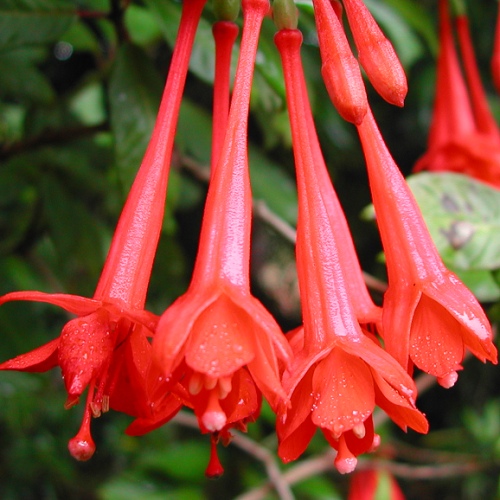Germinating the seeds
Plant your seeds when you receive them for the best germination Getting started -- Use any small containers or cups that have drainage holes. Use a well draining soil
mix, such as 2 parts potting soil and 1 part perlite. Any alternate mix is equal parts of
coco fiber and
perlite Fill each container and water it. Don't compress the soil. Place a seed or 2 on top, and sprinkle a thin layer of soil on top - just enough to barely cover the seeds. Sprinkle some water on the top soil layer to settle in the seeds. Until the seeds sprout, ensure that the soil surface always stays moist. An easy way maintain moisture is to enclose the pots in a plastic dome or bag. Leave it open a crack to allow some fresh air in. You may need to drip a few drops of water on the seeds every day keep them moist. Keep the pots at about 65-77 degrees F (18-25°C). A little cooler at night is ok, but avoid letting them get above 80°F (27°C). I recommend keeping a minimum/maximum thermometer near the pots. Place the pots in a bright spot out of direct sun. An LED or fluorescent lamp kept 4 inches (10 cm) away provides the right amount of light (See: "Growing indoors with LED lights"). The seeds should begin sprouting in 4 to 6 weeks, but may take up to 10 weeks to start, especially at cooler temperatures. Give your seedlings bright light, but avoid direct sunlight when they are small. I recommend growing them indoors for at least 2-3 months. If you have more than one seedling in each container, either snip off the weaker one(s) after 4 weeks or gently transplant them. Growing onward... Watering - This Fuchsia likes evenly moist soil, but it shouldn't be perpetually soggy either. Never let the pots dry out, but don't let them sit in a tray of water either. Climate -- It thrives when temperatures are mild during the day and cool at night. The plant might not thrive if temperatures regularly get above 85° F (29°C), and nights are above 65 degrees F (18 C). In warmer conditions, give the plants afternoon shade, and keep the pot shaded. The plant can probably only survive a light frost (26°F/-3°C), but it's best to protect it from freezing temperatures. Over about 40% humidity is recommended. If the plants seem to suffer from low humidity indoors, consider using an ultrasonic humidifier, sold at home improvement stores and some thrift shops. Feeding - For the first 2 months, feed once a week with a small amount of liquid fertilizer at a diluted dose (about 1/8 strength). Hydroponic fertilizer is ideal for young seedlings, because it complete and easily absorbed. Once they are 2 months old, you may switch to an all-purpose granular fertilizer that contains micronutrients, following the dose on the package. Or continue using dilute fertilizer weekly. The plant has average fertilizer requirements. Pruning -- The plant tends to have a wide growth habit, but you can encourage a more upward, tree-like shape by removing some of the lower side branches after the plant is 6 months old. Pests to watch for - Watch for any bugs that typically affect your other plants. Try using insecticidal soap spray before using stronger remedies, since some may harm the plant. If you have any questions, feel free to contact me. Have fun growing them! - Jeff Strange Wonderful Things
|
|||||||||


